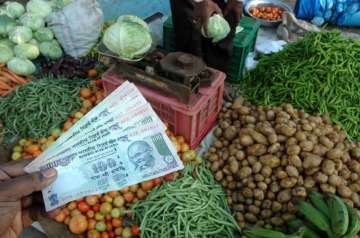With the Reserve Bank of India slashing the repo rate by 25 bps on Friday, there are several factors that are likely to shape the inflation trajectory. To begin with, the outlook for food inflation has seen considerable improvement since the August bi-monthly policy. According to the Reserve Bank of India, the production of Kharif crop is estimated to close to last year's level, auguring well for the overall food supply situation.
The below-mentioned points will clarify the RBI's stand with the repo rate cut
1. The prices of vegetables are likely to decline as winter supplies enter the market, but will remain elevated in the immediate months. Similarly, the prices of pulses are expected to remain contained by adequate buffer stocks.
2. Weak demand conditions are likely to persist, as the RBI surveys have indicated softening of output prices in Q3:2019-20. Accordingly, price pressures in CPI excluding food and fuel are likely to be muted.
3. Prices of crude oil are likely to remain volatile in the near-term. While the global demand is declining, the persisting geo-political uncertainties pose some upside risks to the inflation outlook.
4. Near-term price pressures are seen as three-month and one-year ahead inflation expectations of households polled by the Reserve Bank have risen in the current round.
5. Financial markets remain volatile with currencies of several emerging market economies trading with a depreciating bias in the recent period.
With the repo rate cut, the CPI inflation projection is revised slightly upwards to 3.4 per cent for Q2:2019-20, while the projections are retained at 3.5-3.7 per cent for H2:2019-20 and 3.6 per cent for Q1:2020-21, the RBI said.
Turning to the growth outlook, various high-frequency indicators suggest that domestic demand conditions have remained weak. The business expectations index of the Reserve Bank’s industrial outlook survey shows muted expansion in demand conditions in Q3.
On the positive side, however, the impact of monetary policy easing since February 2019 is gradually expected to feed into the real economy and boost demand.
Several measures announced by the Government over the last two months are expected to revive sentiment and spur domestic demand, especially private consumption.
While the recent measures announced by the government are likely to help strengthen private consumption and spur private investment activity, the continuing slowdown warrants intensified efforts to restore the growth momentum, the RBI said.
The Reserve Bank of India, in its statement, also said the inflation is expected to remain below target in the remaining period of 2019-20 and Q1:2020-21. Therefore, there is a policy space to address these growth concerns by reinvigorating domestic demand within the flexible inflation targeting mandate.
Also Read | RBI cuts repo rate by 25 bps, reverse repo rate adjusted to 4.90 pc
Also Read | RBI increases withdrawal limit for PMC depositors to Rs 25,000
Latest Business News

